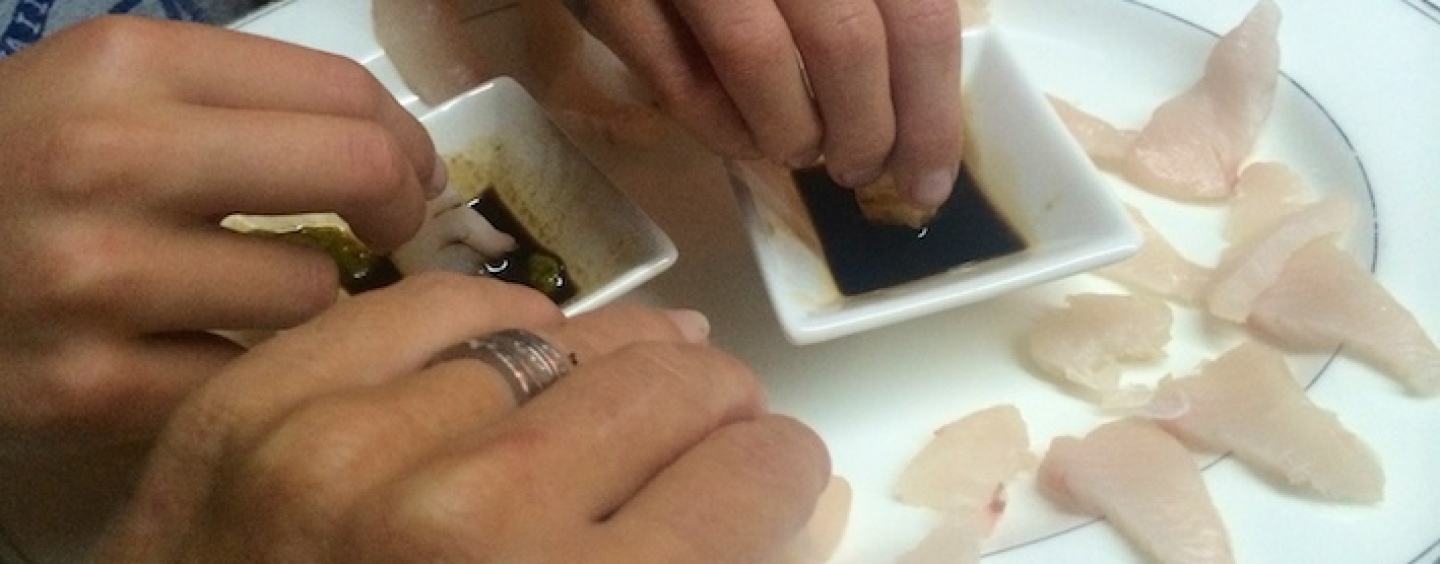As the weather warms up, the mackerel turn up. And better news is they are here to stay until Autumn!
The best mackerel for eating are Spanish mackerel (sometimes known as narrow-barred mackerel for their striped skin pattern), but I’m not above enjoying fresh fillets from a spotted or school mackerel either.
I’m not a fan of cutting mackerel into steaks as I think it produces a strong-tasting and often dry (overcooked) portion of fish. My preference is always to take those big meaty sides off the fish and diagonally slice off fillets, leaving the skin behind.
A very simple preparation is tossing the fillets in basil pesto, and baking them with a stalk of baby truss tomatoes.
Mackerel have healthy natural oils but cook into clean white flakes making them one of my Top 5 table species. In our house, mackerel is everyone’s favourite sashimi…but you’ve got to be quick or it’s all gone!
But by far, my favourite way to enjoy this under-rated species, is to sauté it gently in foaming butter, and serve it with fresh lemon and cracked pepper….and a cold beer!
By Sally Jenyns
Tips on catching Spanish mackerel
When fishing for Spanish mackerel on the Gold Coast, a day trip to the reefs off Palm Beach and Burleigh Heads will not disappoint. The season is from December until the end of April after which time the mackerel will head north following the bait schools and the warmer currents. The closest ramps are at Currumbin Creek. Try trawling the area first and don’t be surprised if you catch mackerel between 5 and 10 kg. Spanish mackerel’s common length is 50 to 80 cm, with a maximum weight of about 30 kg. Minimum size allowed is 75 cm with a bag limit of 3. School mackerel’s common length is 50 to 80 cm, with a maximum weight of about 8 kg. Minimum size allowed is 50 cm with a possession limit of 10.




























